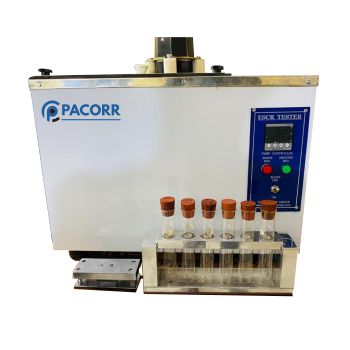
Determine Environmental Cracks on Polymers
 The plastic material is affected due to environmental stress and cracking. Polymers are widely used in several industries for industrial and domestic use. The versatility of polymers makes them ideal for a lot of applications. Products made from plastic material are the most durable form of packing as they can be molded to any shape. These polymer materials tend to have cracks and stress due to prolong tensile stress. These cracks mainly occur due to hot and cold conditions.
The plastic material is affected due to environmental stress and cracking. Polymers are widely used in several industries for industrial and domestic use. The versatility of polymers makes them ideal for a lot of applications. Products made from plastic material are the most durable form of packing as they can be molded to any shape. These polymer materials tend to have cracks and stress due to prolong tensile stress. These cracks mainly occur due to hot and cold conditions.
Environmental stress cracking occurs due to microscopic cracks that form on polyethylene tanks as aggressive chemicals are stored inside them. When polyethylene is processed, it is done using common plastics processes such as extrusion, injection molding or blow molding. Chemicals like soaps, detergents and wetting agents are hard on polyethylene causing cracking over time.
The cracking resistance of polymer materials is affected due to environmental stress and influenced by design of containers, treatments during and after production, molding conditions and other factors. Parts that are used in water containers are stressed and molded. They face contant tensile pressure for a long time due to their shape. Good quality material is more resistant the tensile stress. To ensure product quality, manufacturers must opt for accurate test solutions. Environmental Stress Cracking Resistance (ESCR) tester is an appropriate machine that measures the stress on polymer or plastic materials.
ESCR is an accurate test unit that is used to determine the physical modifications in plastic material under environmental stress. It measures the actual working life of the material and complies with the ASTM standard. The instrument is equipped with a motorized stirrer that distributes the heat uniformly. The chip-based program control gives accurate data in number format on LED screen. The ESCR tester has an inbuilt-auto-tuning feature with PID temperature control.
The sample used for testing is cut into a strip and punctured from the center. The strip is folded from this punctured point and placed inside the fixture. An ESCR tester has 6 cavities and 6 samples. In these cavities, 6 test tubes can be placed in water. This water bath is equipped with a stirrer.
The tank is filled with various forms of liquids like detergent, soap, oil, cleaning agents, these packing may experience failure due to constant stress. Similar conditions are applied in the lab to get measure before starting the mass production. This also helps in identifying the manufacturing defects and rectifying the manufacturing line accordingly.

